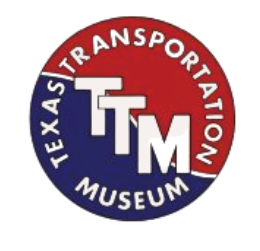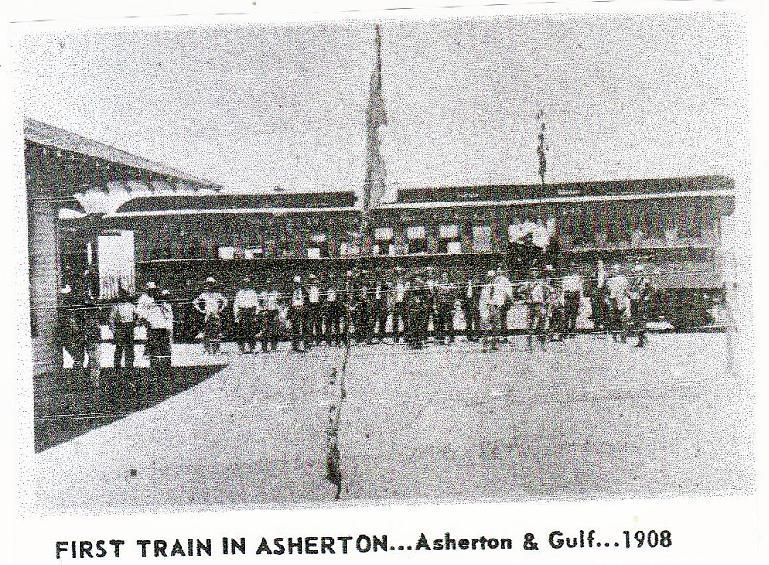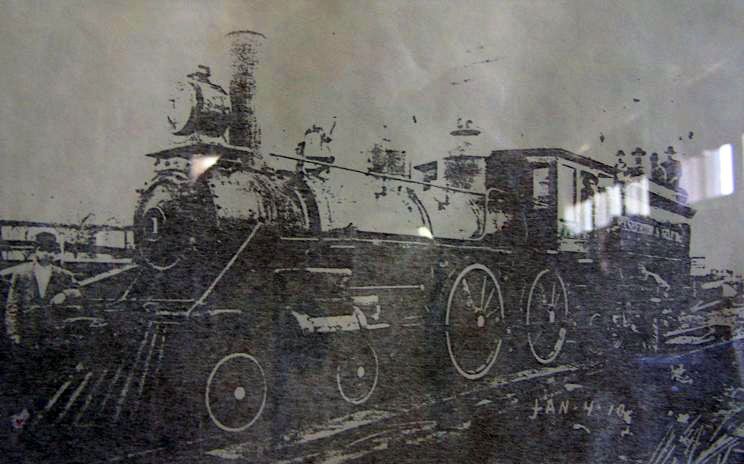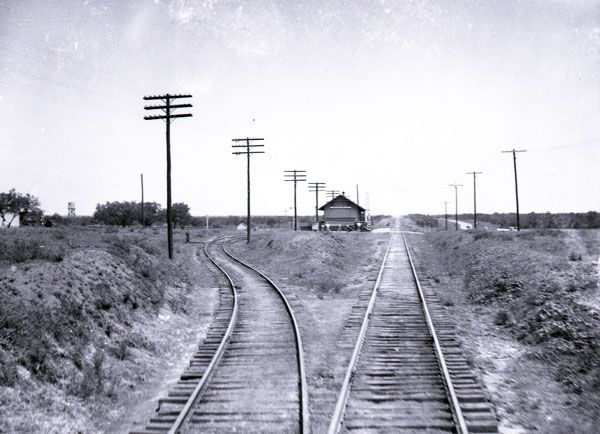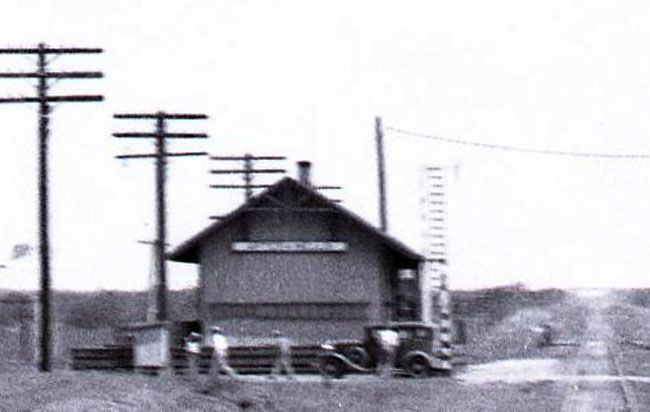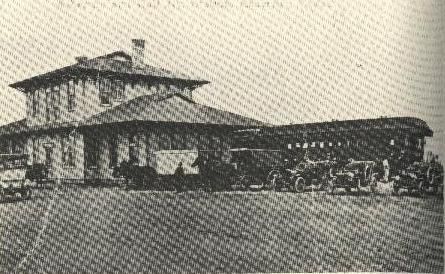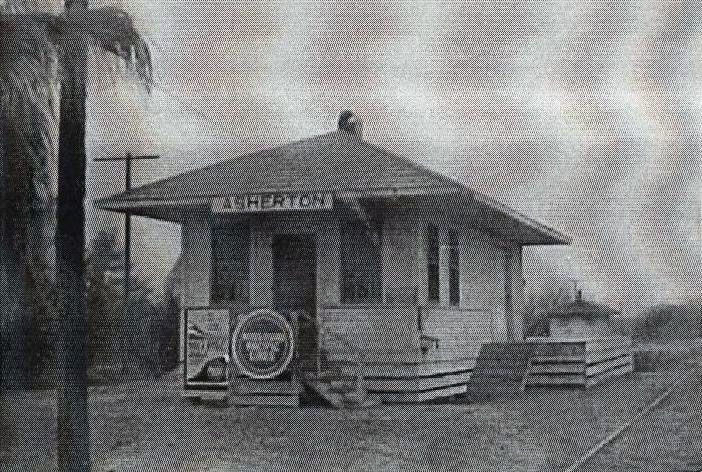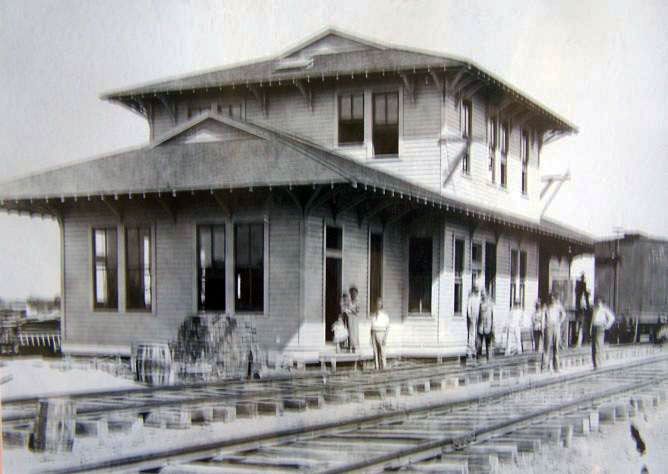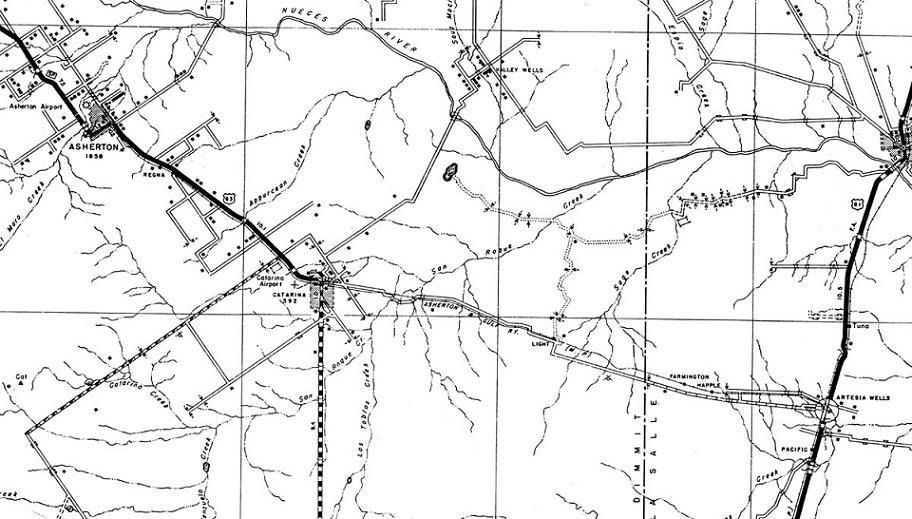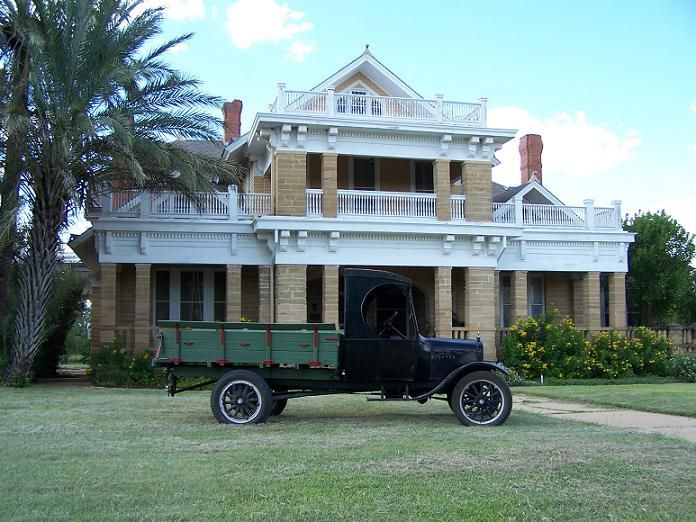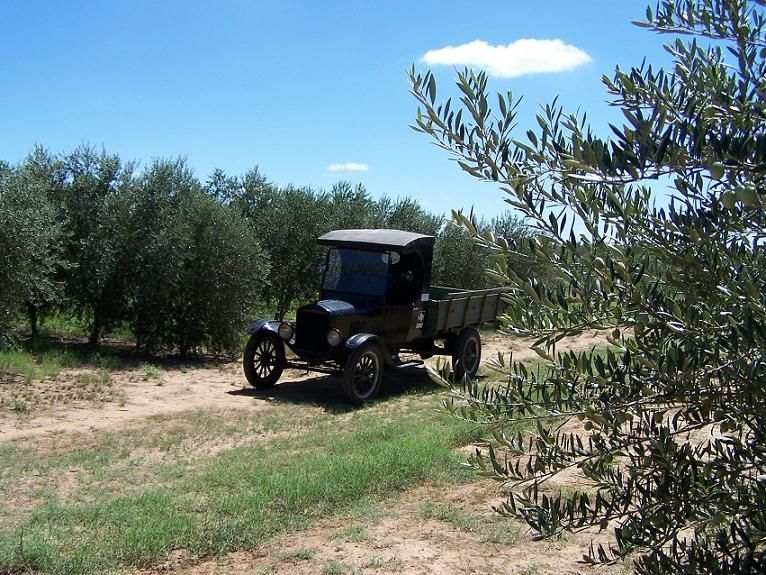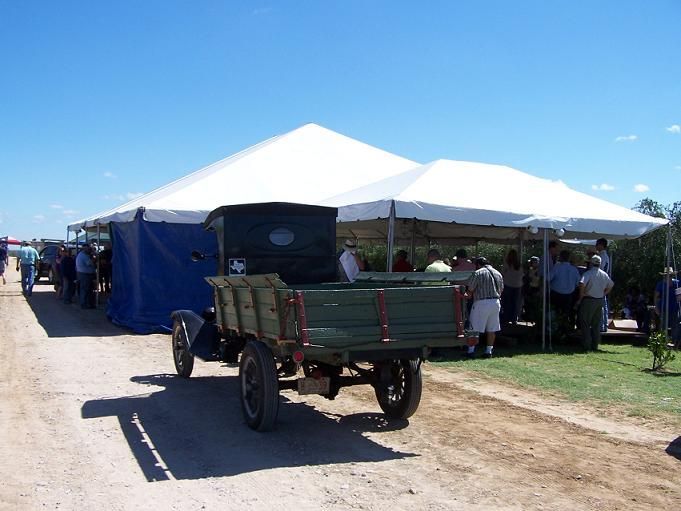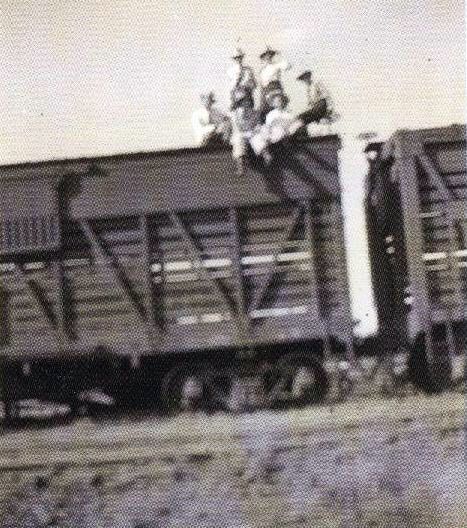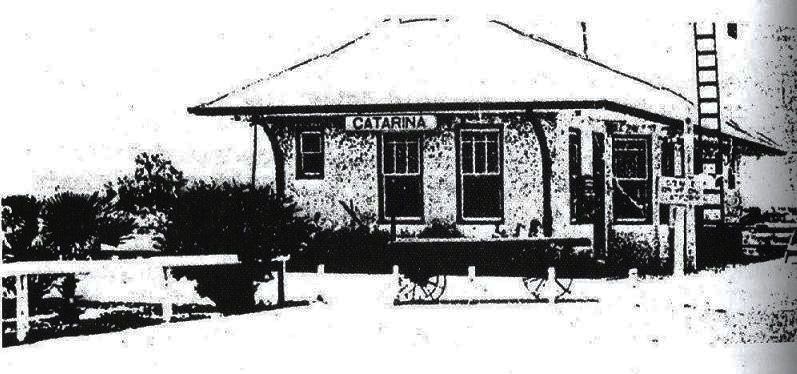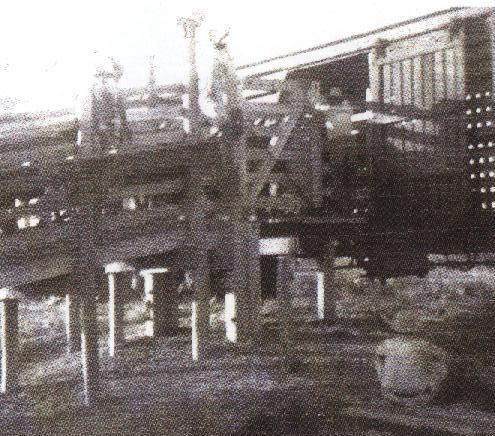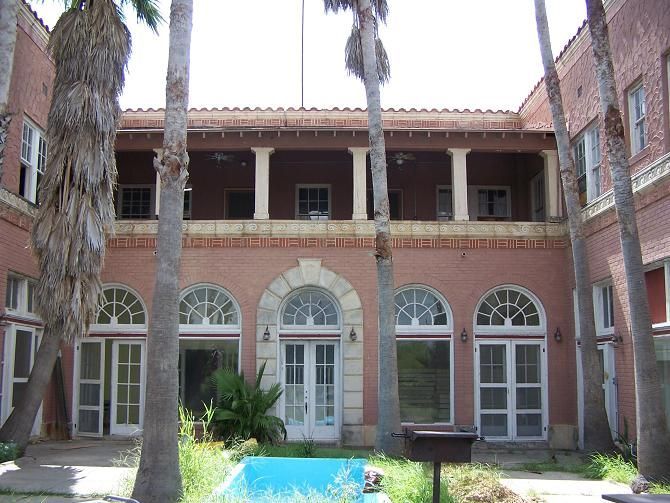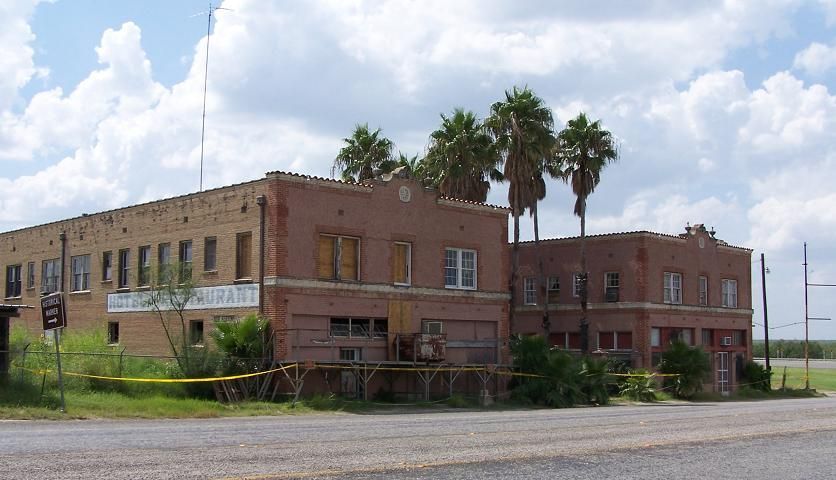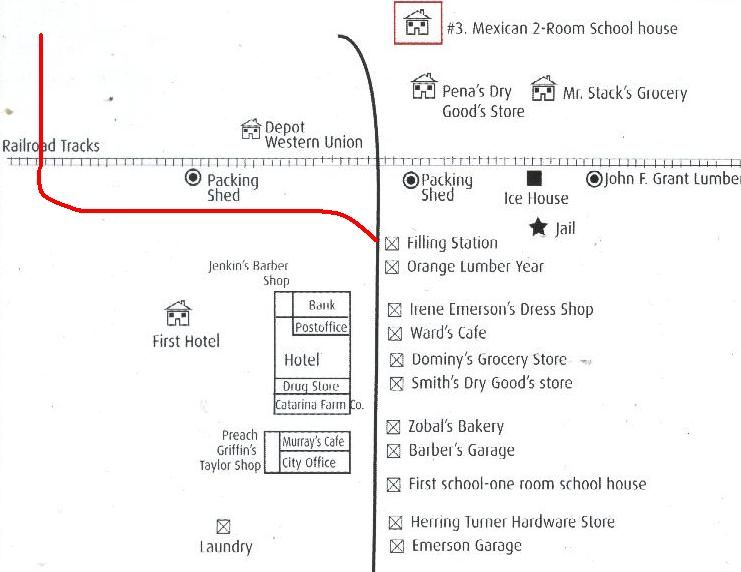Asherton and Gulf Railroad
Thanks to the Richardson family, Bert Bell, Jimmy Barlow and the Carrizo Springs public library for their generous assistance.
First Asherton and Gulf Train
The Asherton and Gulf Railway Company was a thirty-two mile short line created by Asher Richardson in 1909 to serve a new town called Asherton he created in Dimmit County, Texas, eight miles south of Carrizo Springs, the county seat. It connected with a water stop called Bart on the main line tracks of the Missouri Pacific railroad between San Antonio and Laredo at a location a few miles south of Dilley, Texas. In due course a small town evolved at the junction which was named Artesia Wells. This community never grew much beyond 100 residents. The community was served by a substantial depot that provided a place for passengers and freight waiting for the Asherton and Gulf train.
The depot at Artesia Wells
The A&G took over from a railroad company chartered as the Nueces Valley, Rio Grand and Mexico Company in 1905, with the intention of reaching Carrizo Springs, where an office was set up. No construction occurred until Mr. Richardson took over the project. The first train arrived in Asherton on August 2, 1909. For his own reasons, Richardson declined to extend the tracks to Carrizo Springs. It has been speculated he wished to wrest county seat status from the older community. This scenario was quite common if the older city failed to gain a railroad connection. Leaders of Carrizo Springs promptly paid $345,000.00 to another short line railroad, the Crystal City and Uvalde, which had just built tracks to another new town, Crystal City, twelve miles to the north in Zavala County. It is worth mentioning the CC & U bypassed the old Zavala County seat, Batesville, and the business generating prestige moved to Crystal City.
Asherton and Gulf Railroad Rolling Stock
The Asherton & Gulf would always be a marginal operation at best. Richardson himself quipped if you want to go broke fast, own a railroad. After he died in 1914, control of the railroad and the entire Asherton Land and Irrigation Company passed to his widow, Mary Isabelle. A number of law suits regarding the non-payment of promised funds for access to the railroad were in progress but it would appear that few judgments were made in favor of the A&G. In 1921 the railroad was valued at $494,068. This included the right of way, two depots and the rolling stock, which comprised of two steam locomotives, one flat car, one coal car, one passenger car and one baggage/express car. At the same time its liabilities, including outstanding debts and other obligations, came to $460,731. Its revenue was $82,107 and its expenses were $74,123, 90.18% of revenue. In the odd world of railroads, it made more money in 1919 from lower revenue of $58,521 due to lower costs of $42,541, yielding a profit of $15,980 in 1919 as opposed to just $8,074 in 1920.
Asherton's Two Depots
In 1920 the railroad earned $70,099 moving freight, $6,641 from passengers, $3,433 from express services – light freight that today is delivered by UPS and Fed Ex, $1,231 from mail and $793 from miscellaneous other forms of revenue for a total of $82,197. The A&G carried 7,645 passengers for an average revenue of just 87 cents each! In 1920 all passengers were carried on mixed trains, which is to say the passenger car was attached to the daily freight trains. The A&G ran no passenger only trains, and only a very few freight only trains. Within a few years the need for daily freight trains had diminished. In order to save money while fulfilling their common carrier obligations, the A&G acquired a gasoline powered lightweight passenger/express railbus, more commonly known as a doodlebug.
1936 Map of the Asherton & Gulf Railroad Company
In 1920, the Asherton & Gulf moved 34,608 tons of freight. This broke down as follows:
Produce of agriculture - 13,034 tons
(12,169 tons of vegetables, plus some wheat and cotton but, surprisingly, no fruit.)
Produce of animals - 11,639 tons
(11,575 tons of cattle, plus some horses, sheep and goats.)
Produce of mines - 3,409 tons
(3,304 tons of bituminous coal plus other materials)
Produce of forests - 3,006 tons
(2.705 tons of construction lumber, plus posts and railroad ties)
Manufactures & miscellaneous - 3,520 tons
(1,739 tons of vegetable oil, 669 tons of ice, 172 tons of fertilizer, 136 tons of machinery, including boilers, 91 tons of automobiles and trucks, 77 tons of agricultural implements including tractors, 70 tons of household goods, and 519 tons of "LCL" or Less Than Carload freight such as barrels of fuel)
The Asherton & Gulf employed 54 people in 1920: 6 officers, 2 section foremen and 24 section men who maintained the tracks,1 machinist, 1 boilermaker, 1 blacksmith, 1 carpenter, four other skilled workers and two other yard workers who looked after the rolling stock and other railroad items, 2 station agents and 3 other station employees, 1 engineers, 1 fireman, 1 conductor and 2 brakemen. Total salaries and pay came to $37,085, almost exactly half of the total expenses for the year. The locomotive engineer had the highest non-officer salary, $2,368 annually. Pay is factored into the overall expenses incurred by the company. MOE, or maintenance of equipment, came to $20,842. MOW, or maintenance of way, came to $21,110. Railroad operating expenses, including fuel, came to $27,770. This came, including $329 of other miscellaneous, to the $74,123 annual expenditure total for 1920.
TTM's 1924 Ford Model T Truck In and Around Asherton in 2010
The A&G was entirely dependent on just two small towns, Asherton and Catarina, ten miles south of Asherton. Artesia Wells never really took off despite its access to good water. Catarina was created when cattle pens were built near the tracks and the offices of the Taft Catarina Ranch which had given right of way to the railroad, were relocated nearby by ranch manager, Joseph Green. Before long a small town was developed. Located within it was a mansion built by Charles Taft with bathrooms big enough to accommodate his notoriously large brother, former US president Howard Taft, who never actually came to visit. The town also boasted a large hotel which had the post office and other businesses on its ground floor. Just before the great depression Catarina and its surrounding farms reached as many as 2,500 residents but soon declined when easy access to a shallow aquifer dried up and the economy hit the skids. By contrast The Crystal City & Uvalde, while heading south from Uvalde where it connected with the Southern Pacific mainline, helped create La Pryor and then was extended both south to Carrizo Springs and eastwards to towns like Brundage, Big Wells. When it met the Missouri Pacific mainline at Gardendale it continued eastward to Fowlerton, whereupon its name and fortune were forever changed, to the San Antonio, Uvalde and Gulf.
Catarina Depot and Cattle Pens
Asherton blossomed briefly and became a major shipping point for Bermuda onions, developed in nearby Bermuda, Texas. The community, which boasted a bank, a hotel, several churches and businesses, initially thrived but faltered in the Great Depression. Plans were floated to extend the Asherton and Gulf both westward sixty miles to Eagle Pass and eastward 120 miles to Aransas Pass but nothing came of them. What did happen in 1926 was the railroad was purchased the Missouri Pacific. In accordance with Texas law, the A&G was acquired through MOPAC's principle Texas based subsidiary, the New Orleans, Texas and Mexico Railroad, which folded it into its Gulf Coast Lines division. And even the mighty MOPAC saw no value in building a rail connecting between Asherton and Carrizo Springs, just eight short miles apart, even though they had purchased the San Antonio, Uvalde & Gulf a year earlier. Instead several "economies of scale" were imposed upon the old Asherton and Gulf. Its independent engine and track maintenance operations were terminated. The imposing two storey main office was demolished except, possibly, for one of its end structures, which acted as the new depot. It is also possible the resulting small depot was an entirely new structure. It's hard to say definitively.
Catarina Map and Hotel
Asherton enjoyed another brief spell of prosperity in the mid 1950s before fading away again. The Missouri Pacific abandoned the old A&G line in 1958. The reduced depot was torn down. Material from the depot in Catarina was used to build an unrecognizable house nearby. In a final indignity to the old railroad, most of its right of way was obliterated when Highway 83 was widened and straightened not long after the tracks were removed. The new highway cut a new swathe through Asherton that not only ignored the old grid pattern but diagonally cut the small community in two. The same, almost violent, redirection happened in both Carrizo Springs and Catarina. Artesia Wells fared even worse. When Interstate 35 was built the old town site was simply paved over and the few residents remaining were obliged to relocate to a location at least half a mile from the railroad, which is still in operation as the mainline between Laredo and San Antonio. Fifty years later you really have to put in a lot of effort to find even the slightest trace of the Asherton and Gulf. Only the once bustling ice house that stood right beside the tracks in Catarina still stands, long abandoned, in the middle of what is now thick woodland. The town's old cattle pens still exist, also long disused, but drainage depressions for the highway obscure the old track road bed almost completely.
Asherton & Gulf Timeline
━━━━━━━━━━━━━━━━━
1909
The Asherton & Gulf RR begins service, running 32 miles from Artesia Wells on the Missouri Pacific RR between San Antonio and Laredo, to the new town of Asherton in Dimmit County.
━━━━━━━━━━━━━━━━━
1910
The new town of Catarina is formed along the route of the A&G, becoming the only other community on the line
━━━━━━━━━━━━━━━━━
1914
Asher Richardson, who created Asherton and the A&G dies. His wife assumes ownership.
━━━━━━━━━━━━━━━━━
1915
Asherton has 1,000 residents, Catarina 25, including Charles Taft, the brother of US President William Howard Taft.
━━━━━━━━━━━━━━━━━
1926
The A&G is purchased by the Missouri Pacific and folded into its Gulf Coast Lines division.
━━━━━━━━━━━━━━━━━
1958
The route of the A&G is abandoned
Frank Crothers at the San Antonio bicycle race track.
Transportation Museum
CONTACT US TODAY
Phone:
210-490-3554 (Only on Weekends)
Email:
info@txtm.org
Physical Address
11731 Wetmore Rd.
San Antonio TX 78247
Please Contact Us for Our Mailing Address
All Rights Reserved | Texas Transportation Museum
